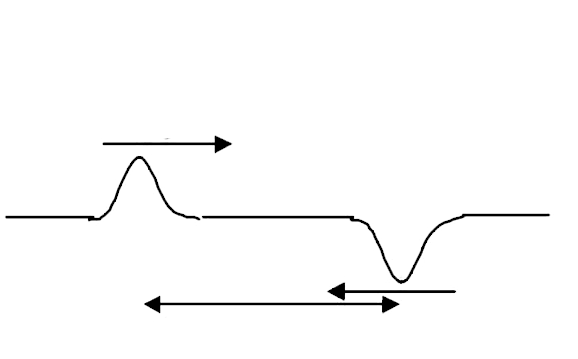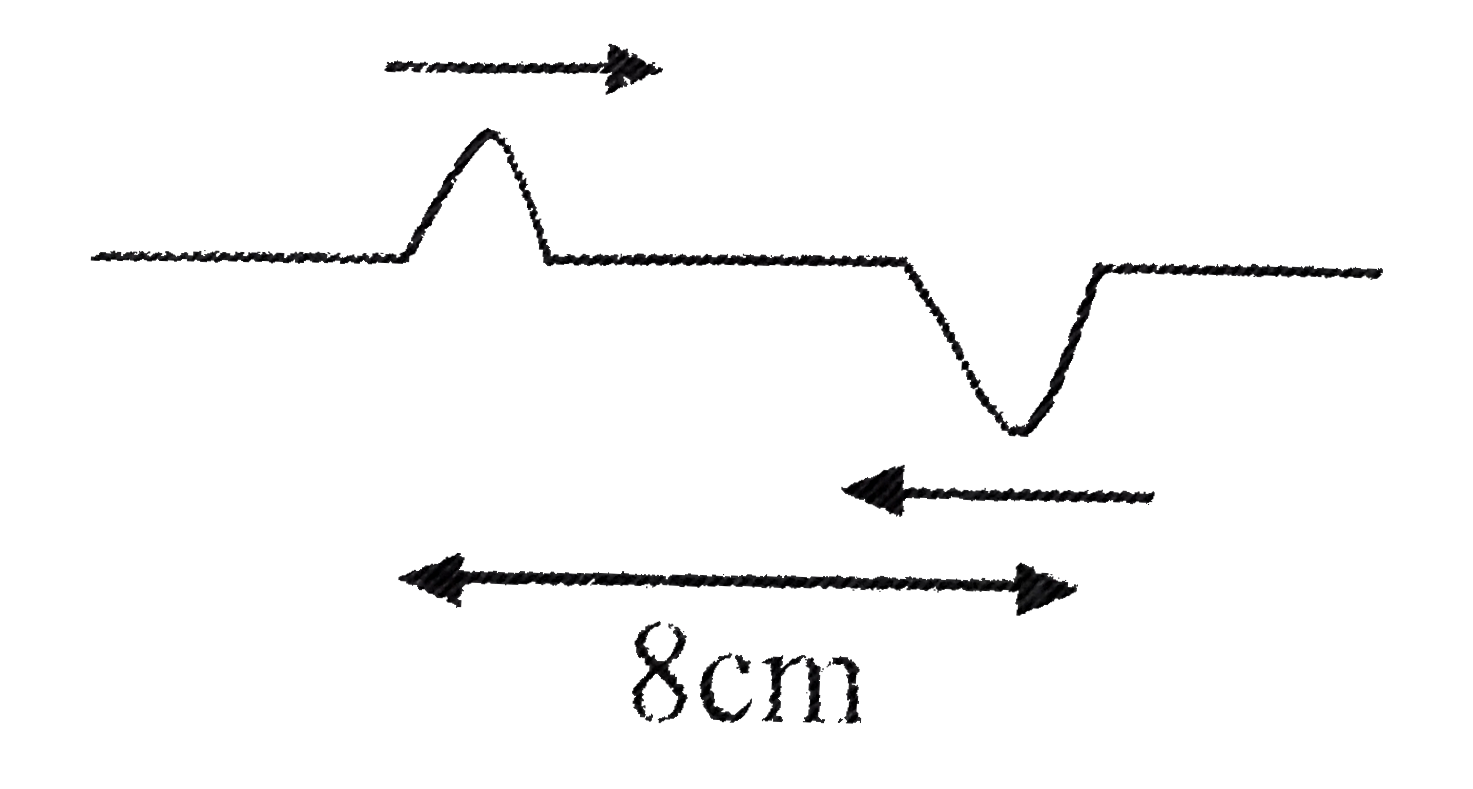Explain graphically the formation of superposition when two pulses travelling towards each other ?
When a jerk is given to a strethced string that is tied at one end, wave pulse is produced and the pulse travels along the string. Suppose two persons holding the strethced string on either side give a jerk simultaneously, then these two wave pulses move towards each other. Then wave pulses meet at some point and move away from each other with their original identiy. Their behaviour is very different only at the crossing/meeting points. In addition, this behaviour depends on whether the two pulses have the same or different shape.

When the pulses have the same shape, at the crossing point the total displacement is given by the algebraic sum of their individual is higher than the amplitudes of the individual pulses. Whereas, if the two pulses have same amplitude but shapes are 180∘ out of phase at the crossing point. Hence the net amplitude vanishes at that point. and the pulses will recover their identities after crossing. Only waves can posses such a peculiar propery, that is called superpsition of waves. This means that thet principle of superposition explains the net behavirour of the waves when they overlap . Generalizing to any number of waves i.e., if two are more moves in a medium move simultaneously. When they overlap, their total displacement is the vector sum of the individual displacement.
Topper's Solved these Questions
- WAVESBOOK - PREMIERS PUBLISHERSCHAPTER - WAVESEXERCISE - OTHER IMPORTANT & QUESTIONS ANSWERS ( NUMERICAL PROBLEMS. )
48 Videos
- WAVESBOOK - PREMIERS PUBLISHERSCHAPTER - WAVESEXERCISE - OTHER IMPORTANT & QUESTIONS ANSWERS ( SHORT ANSWER QUESTIONS. )
34 Videos
- QUESTION PAPER MARCH 2019BOOK - PREMIERS PUBLISHERSCHAPTER - QUESTION PAPER MARCH 2019EXERCISE - Part- IV
23 Videos
- WORK, ENERGY AND POWER BOOK - PREMIERS PUBLISHERSCHAPTER - WORK, ENERGY AND POWER EXERCISE - VERY SHORT ANSWER QUESTIONS
34 Videos
Similar Questions
Two pulses are travelling in the same medium and are at positions, at a time as shown in figure

Subsequent possible interference pattern at different times are shown below.

Write the correct order of pattern from the time when two pulses meet each other.
View SolutionAssertion : When two boats sails parallel in the same direction and close to each other, they are pulled towards each other.
Reason : The viscous drag on a spherical body moving with speed v is proportional to v.
View Solution
Knowledge Check
Two electron beams are travelling parallel to each other. They
Aattract each otherBrepel each otherCdo not effect each otherDnone of theseTwo pulses are travelling in the same medium and are at positions, at a time as shown in figure

Subsequent possible interference pattern at different times are shown below.

Write the correct order of pattern from the time when two pulses meet each other.AII→I→III→IVBI→II→III→IVCII→III→IV→IDNone as shape of each pulse will be altered as pulses passed each otherTwo pulse in a stretched string whose centers are initially 8cm apart are moving towards each other as shown in the figure. The speed of each pulse is 2cm/s. After 2seconds, the total energy of the pulse will be
 AzeroBpurely kineticCpurely potentialDpartly kinetic and partly potential
AzeroBpurely kineticCpurely potentialDpartly kinetic and partly potential
When air is blown In between two balls suspended close to each other they are attracted towards each other why?
View SolutionWhan air is blown in between two balls suspended close to each other, they are attracted towards each other. Why?
View SolutionTwo pulses in a stretched string whose centres are initially 8 cm apart are moving towards each other as shown in the figure. The speed of each pulse is 2 cm/s. After 2 second, the total energy of the pulses will be

View SolutionTwo pulses in a stretched string whose centres are initially 8 cm apart are moving towards each other as shown in the figure. The speed of each pulse is 2 cm/s. After 2 second, the total energy of the pulses will be

View SolutionTwo pulses in a stretched string whose centres are initially 8 cm apart are moving towards each other as shown in Fig. (15.13.3) . The

Speed of each pulse is 2 cm/s. After two seconds, the total energy of the pulses will be
View Solution
